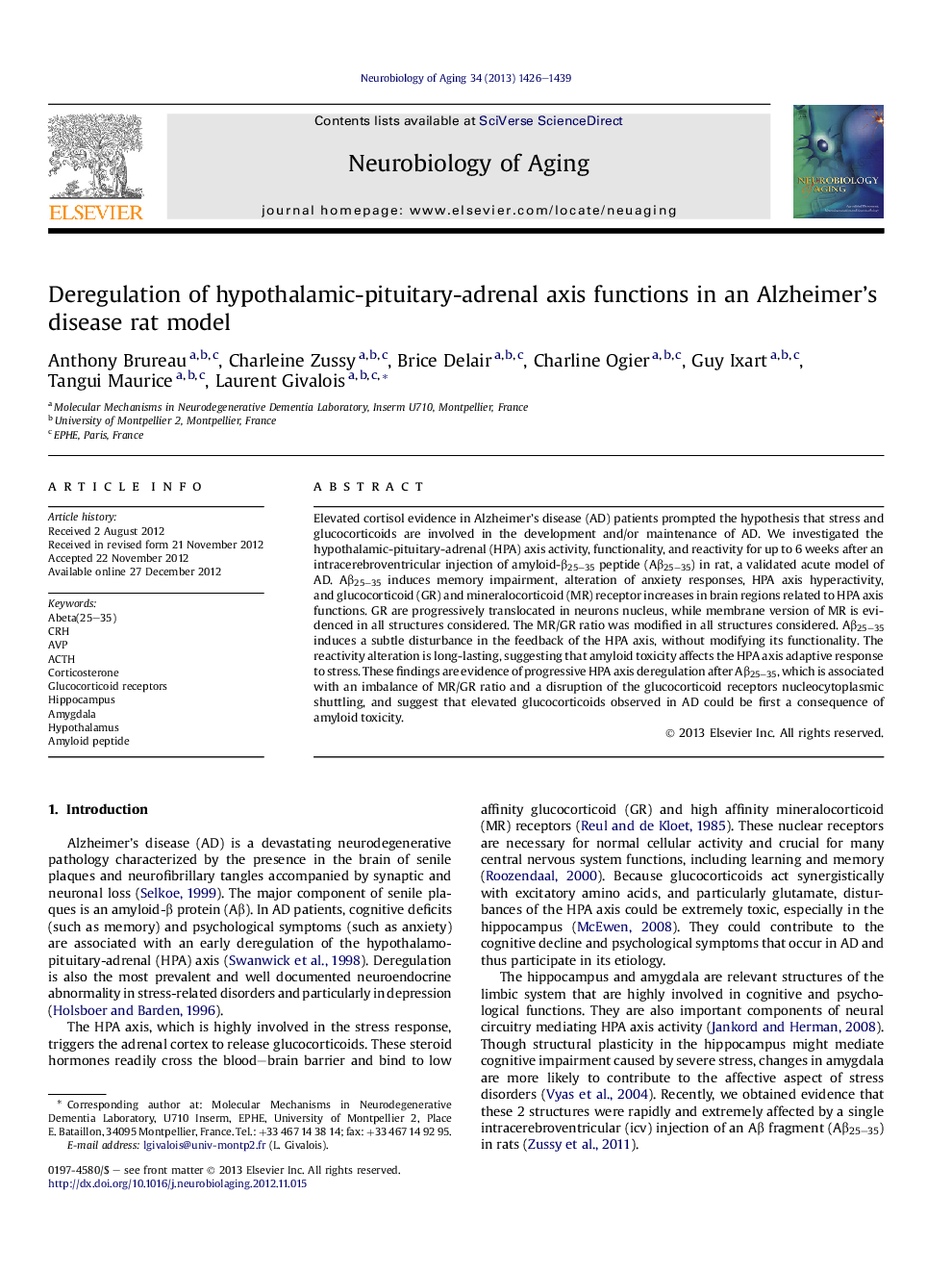| Article ID | Journal | Published Year | Pages | File Type |
|---|---|---|---|---|
| 6807459 | Neurobiology of Aging | 2013 | 14 Pages |
Abstract
Elevated cortisol evidence in Alzheimer's disease (AD) patients prompted the hypothesis that stress and glucocorticoids are involved in the development and/or maintenance of AD. We investigated the hypothalamic-pituitary-adrenal (HPA) axis activity, functionality, and reactivity for up to 6 weeks after an intracerebroventricular injection of amyloid-β25-35 peptide (Aβ25-35) in rat, a validated acute model of AD. Aβ25-35 induces memory impairment, alteration of anxiety responses, HPA axis hyperactivity, and glucocorticoid (GR) and mineralocorticoid (MR) receptor increases in brain regions related to HPA axis functions. GR are progressively translocated in neurons nucleus, while membrane version of MR is evidenced in all structures considered. The MR/GR ratio was modified in all structures considered. Aβ25-35 induces a subtle disturbance in the feedback of the HPA axis, without modifying its functionality. The reactivity alteration is long-lasting, suggesting that amyloid toxicity affects the HPA axis adaptive response to stress. These findings are evidence of progressive HPA axis deregulation after Aβ25-35, which is associated with an imbalance of MR/GR ratio and a disruption of the glucocorticoid receptors nucleocytoplasmic shuttling, and suggest that elevated glucocorticoids observed in AD could be first a consequence of amyloid toxicity.
Keywords
Related Topics
Life Sciences
Biochemistry, Genetics and Molecular Biology
Ageing
Authors
Anthony Brureau, Charleine Zussy, Brice Delair, Charline Ogier, Guy Ixart, Tangui Maurice, Laurent Givalois,
